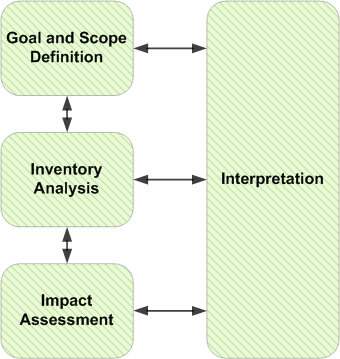| << Chapter < Page | Chapter >> Page > |
A complete LCA assessment defines a system as consisting of four general stages of the product or service chain, each of which can be further broken down into substages:
Each of these involves the transport of materials within or between stages, and transportation has its own set of impacts.
In most cases, the impacts contributed from each stage of the LCA are uneven, i.e. one or two of the stages may dominate the assessment. For example, in the manufacture of aluminum products it is acquisition of materials (mining), purification of the ore, and chemical reduction of the aluminum into metal that create environmental impacts. Subsequent usage of aluminum products by consumers contributes very few impacts, although the facilitation of recycling of aluminum is an important step in avoiding the consumption of primary materials and energy. In contrast, for internal combustion-powered automobiles, usage by consumers creates 70-80% of the life cycle impacts. Thus, it is not always necessary that the LCA include all stages of analysis; in many cases it is only a portion of the product/service chain that is of interest, and often there is not enough information to include all stages anyway. For this reason there are certain characteristic terminologies for various “scopes” of LCAs that have emerged:
Over time the methodology for conducting Life Cycle Analyses (LCAs) has been refined and standardized; it is generally described as taking place in four steps: scoping, inventory, impact assessment, and interpretation. The first three of these are consecutive, while the interpretation step is an ongoing process that takes place throughout the methodology. Figure General Framework for Life Cycle Assessment illustrates these in a general way.


Notification Switch
Would you like to follow the 'Sustainability: a comprehensive foundation' conversation and receive update notifications?